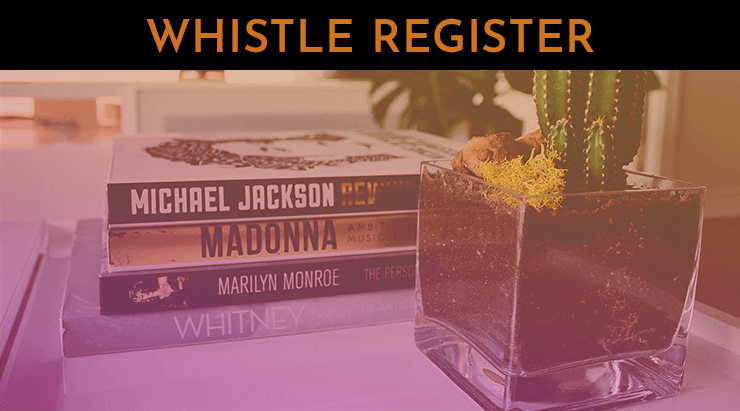Whistle Register - Explained!
August 12, 2019By Nellie Vinograd
Singing in your whistle register (also known as whistle notes or bell notes) is no easy feat. Beyoncé’s notorious key changes in “Love On Top” eventually climb to a whistle register voice, but anyone who’s tried singing along to this song knows it’s taxing on the voice and for many, proves physically impossible.
Interested in learning more? Listen to music by pop singers like Minnie Riperton and Mariah Carey or coloratura sopranos like Renèe Fleming and hear how they engage these higher-than-high notes. For classical singers, a famous example is the second Queen of the Night aria (“Der Holle Roche”) from Mozart’s The Magic Flute. Knowing what sort of quality you want to aim for will help you achieve creating that sound yourself. Do you want a bright intensity like the Queen of the Night or a gentler, airy quality like Ariana Grande?
When it comes to accessing your whistle register, you’ll first want to understand the physicality of what’s happening. Think about a plastic whistle compared to a tuba. Which one creates the high-pitched notes? Exactly. It takes power and breath control to be able to reach whistle notes, but you don’t actually need a lot of space and air to create the sounds. Imagine your vocal chords being tightened or almost tensed up as they release just a tiny amount of air — however, this is just for visualizing, don’t actually pinch or tense up as you try to reach these notes.
You’ll want everything in your singing arsenal at the ready when you attempt to sing in whistle register (posture, proper breathing, etc), which means you’ll need to be fully warmed up and “stretched” before getting started. Jumping straight into your highest possible note at full volume will be a sure fire way to damage your voice. Take your time in easing in and spend about double the amount of time warming up as you would normally.
Begin with sirens or sighs that start out at the highest pitch you can reach comfortably and then glide down into a lower note. Get used to the light feeling that comes with being in this lofty register. You’ll be tempted to strain as you “reach up” for these notes, but a better method is gently settling down into them. Relax! Hold your hand above your head and, as you sigh, gently float it down in a rounded motion until it’s resting by your side. Hand motions can help singers visualize what they want their voice to achieve.
Once you’re feeling more warmed up then you’ve ever been, it’s safe to start the actual whistle register exercises. As you move up the scale, descend on an arpeggio singing “Wee wee wee” or “Wih wih wih.” Another exercise to work on is octave jumps. Remember your “Do Re Mi”s? Begin on the lower “Do” note, but sing it on a “Tee” syllable. Then, immediately jump (or quickly glide) into the higher “Do” note, but sing it on the “Roe” syllable. Doing “Tee-Roe” octave jumps as you ascend the scale will get you thinking about how to best engage your vocal cords and figure out the placement you need to hit that high note every time.
Hopefully, any song you’re performing will only have a few instances where the whistle register is engaged. Furthermore, even well-trained sopranos and countertenors have trouble reaching these notes. If you can’t quite get there, don’t feel defeated — it’s better to work on what’s accessible rather than risk damaging your vocal cords by reaching too hard. Singing in whistle register is just one particular skill, after all. You can still work on sounding strong and beautiful in a high register without needing to reach beyond-human levels.


